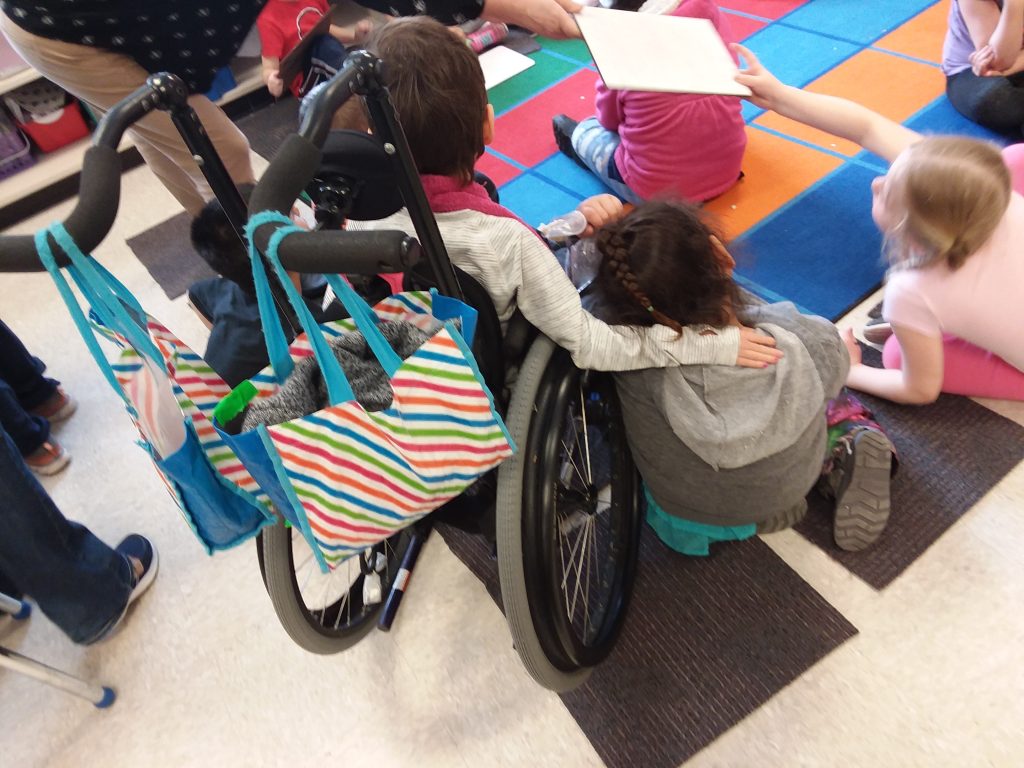Deanna Hron—a kindergarten teacher at King Elementary School in rural Deer River, MN—received the Educator Leadership Award at the Community Schools National Forum in Baltimore last week, in recognition of her “strong leadership in advocating for community schools.”
She was one of two recipients for this national honor, and was recognized in front of over 2,000 community schools practitioners, families, youth, nonprofit and education leaders, and policymakers from around the country.
Hron does much more than teach academics. She knows the obstacles students face in their own learning: food and housing insecurity, limited medical and dental care, lack of access to transportation and technology, the list goes on. 68% of students in her district qualify for free and reduced price lunch. In a rural area, community resources are particularly hard to come by.
Enter, the community school.
What is a Community School?
According to the Coalition for Community Schools, “a community school is both a place and a set of partnerships between the school and other community resources.” Hron calls it “a place and a strategy.”
Put another way: “Most people think of schools today as serving a single purpose: a binary, analog-system of delivery — teachers teach and students learn. [In] community schools … schools and communities connect, collaborate, and create. Children and families have an array of supports from community partners right at their school. Communities and schools leverage their shared physical and human assets to help kids succeed.”
In Minnesota, there are 16 community schools across several districts—Brooklyn Center, Rochester, St. Paul, Duluth, Deer River, Faribault, and Minneapolis. Additionally, there is state support for the initiative. In 2015, the Minnesota legislature passed a bill that created a state pilot community schools program that provided $100,000 in funding for four schools.
Hron’s Journey with King Elementary
Years ago, Hron was a recent convert to the idea of community schools. After hearing one Duluth school’s success story, she reached out to her school’s principal. Then to her district’s superintendent. With clarity of vision and everyone on board, they sought a Minnesota Department of Education community schools grant… and were denied.
But Hron pressed on.
“I think we can do some of this on our own,” Hron recalls thinking. The school district entered into partnership with a Grand Rapids health service to bring mental health practitioners into the school. When Hron wasn’t participating in training herself, she led staff training on what it means to be a full-service community school.
Two years later, already on the path to becoming a community school, King Elementary reapplied to MDE and received an implementation grant—money to hire a coordinator and move the process forward. Hron stresses the commitment it took: even buoyed by supportive administration and colleagues, it took years to lay the groundwork. However, missing those early grant dollars was not the only struggle.
Persevering Despite Opposition
Community support for a community school doesn’t always come easy, especially in rural communities. For one, there are slim to no corporate partners to be found. Also, “a lot of community members don’t believe our job is to bring [more comprehensive student] services to school,” Hron explained.
When Hron and others backed a referendum that would see one building serve as the new full-service community school, the Deer River City Council chose not to support it. One member went so far as to lead a “vote no” campaign against the referendum.
Nonetheless, Hron and her allies galvanized a winning coalition. The referendum passed two to one. The city council member, once the most ardent opponent of the community school, now has a child in Hron’s classroom. Seeing the transformation of the school today, the member conceded, “I can admit when I’m wrong.”
King Elementary Today
King Elementary School’s building is used from morning to night. It’s a hub of activity, housing both a senior center and early childhood center. The school now has four mental health practitioners. In partnership with Second Harvest, there’s also a food pantry, a backpack program that sends food home with students, and twice-weekly “community cafes” with free meals for community members. Afterschool programming is available through the expanding Boys and Girls Club, with a late bus set up to accommodate.
Once, Hron noticed a student taking the late bus, arms full with take-home meals: he was providing his family dinner that night.
“We are in our first year of implementation,” Hron said, her eyes on the future. Next up: a plan to expand access to health services for students. Hron noted that many community programs housed at King Elementary had previously existed, but it took the establishment of a full-service community school to find the people these programs were designed to serve. “I am hopeful that as we help families, we will see students who are ready to learn as their basic needs are being met.”
Found this useful? Sign up to receive Education Evolving blog posts by email.
